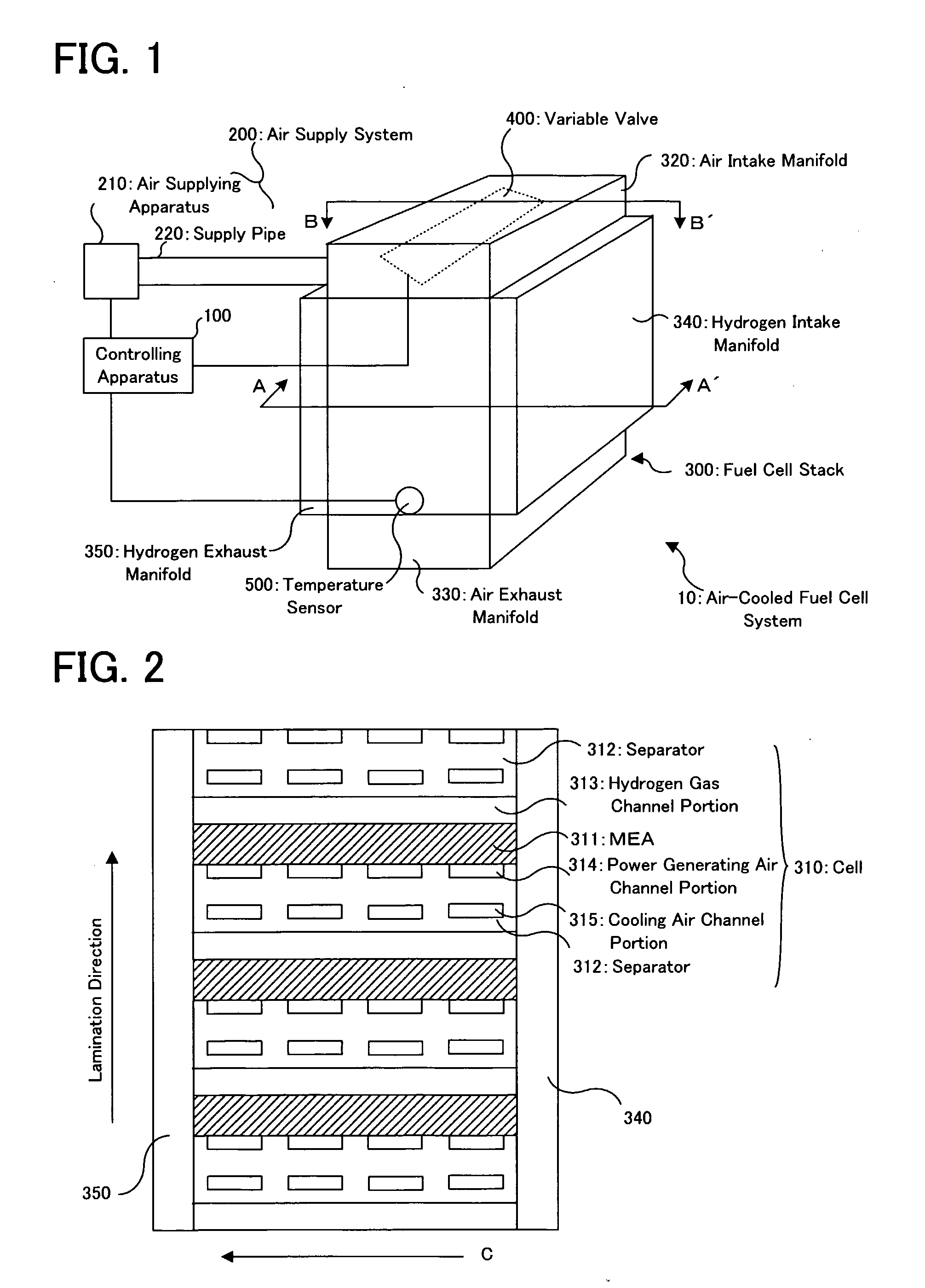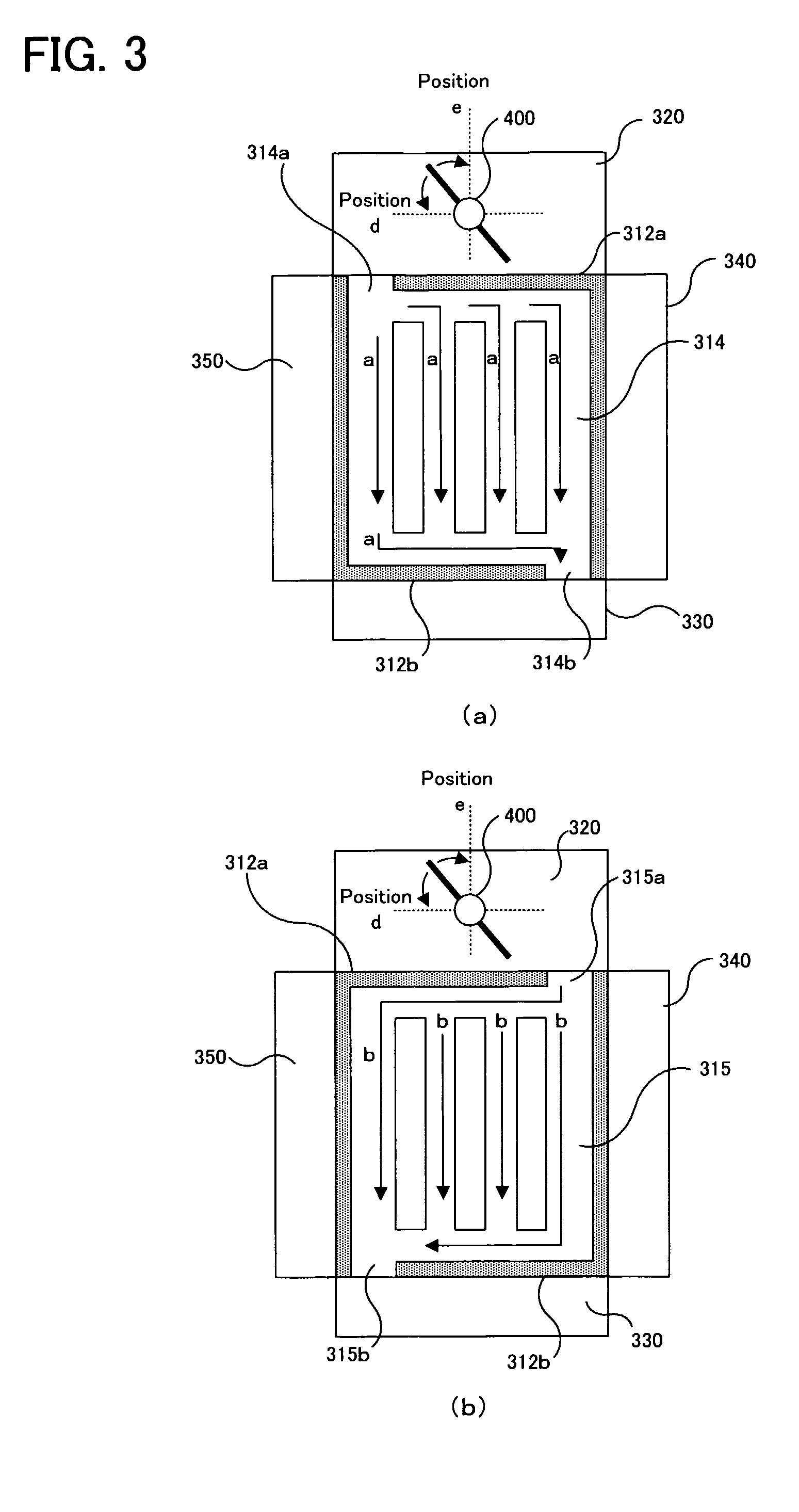Air-Cooled Fuel Cell System
a fuel cell and air-cooled technology, applied in the field of air-cooled, can solve the problems of difficult to cool down air-cooled fuel cells without the output reduction, fuel cell output may reduce, etc., and achieve the effect of reducing the amount of power generation, reducing the output of fuel cells, and increasing the amount of air for power generation
- Summary
- Abstract
- Description
- Claims
- Application Information
AI Technical Summary
Benefits of technology
Problems solved by technology
Method used
Image
Examples
Embodiment Construction
[0050]The preferable embodiment of the present invention will be discussed with reference to the drawings hereinafter.
[0051]At first, with reference to FIG. 1 to FIGS. 3, as occasion demands, the structure of an air-cooled fuel cell system according to the embodiment of the present invention will be discussed. FIG. 1 is a schematic perspective view showing an air-cooled fuel cell system 10. FIG. 2 is an A-A′ cross sectional view in FIG. 1. FIGS. 3 are B-B′ cross sectional views in FIG. 1.
[0052]In FIG. 1, the air-cooled fuel cell system 10 is provided with: a controlling apparatus 100; an air supply system 200; a fuel cell stack 300; a variable valve 400; and a temperature sensor 500.
[0053]The controlling apparatus 100 is a control unit for controlling the operation or operations of the air-cooled fuel cell system 10, and is constructed to function as one example of the “controlling device” of the present invention.
[0054]The air supply system 200 is provided with: an air supplying ap...
PUM
| Property | Measurement | Unit |
|---|---|---|
| temperature | aaaaa | aaaaa |
| threshold temperature | aaaaa | aaaaa |
| volume | aaaaa | aaaaa |
Abstract
Description
Claims
Application Information
 Login to View More
Login to View More - R&D
- Intellectual Property
- Life Sciences
- Materials
- Tech Scout
- Unparalleled Data Quality
- Higher Quality Content
- 60% Fewer Hallucinations
Browse by: Latest US Patents, China's latest patents, Technical Efficacy Thesaurus, Application Domain, Technology Topic, Popular Technical Reports.
© 2025 PatSnap. All rights reserved.Legal|Privacy policy|Modern Slavery Act Transparency Statement|Sitemap|About US| Contact US: help@patsnap.com



